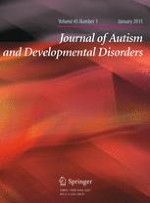01-01-2015 | Original Paper
Change in Autism Symptoms and Maladaptive Behaviors in Adolescence and Adulthood: The Role of Positive Family Processes
Gepubliceerd in: Journal of Autism and Developmental Disorders | Uitgave 1/2015
Log in om toegang te krijgenAbstract
Little is known about outcomes for individuals with autism spectrum disorders (ASD) into adulthood. Several characteristics of individuals with ASD predict long-term outcomes, and the family environment may also play a role. The present study uses a prospective, longitudinal design to describe and predict trajectories of autism symptoms and maladaptive behaviors over 8.5 years in a large, community-based sample of adolescents and adults with ASD. Overall, autism symptoms and maladaptive behaviors were observed to improve over the study period. Above and beyond the adult’s gender, age, and level of intellectual disability, greater improvements were associated with higher levels of maternal praise (based on maternal speech samples) and higher quality mother–child relationships. Implications for future research and intervention are discussed.
